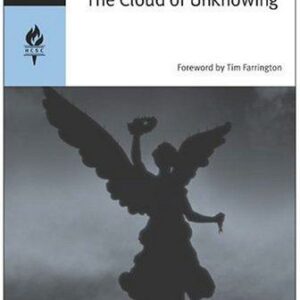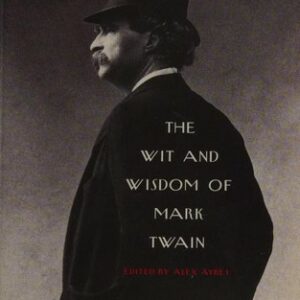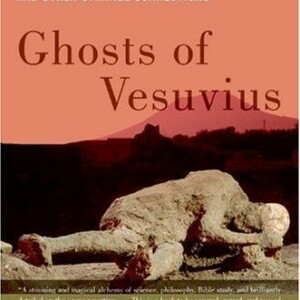Yoga: Discipline of Freedom
$16.00
| Title | Range | Discount |
|---|---|---|
| Trade Discount | 5 + | 25% |
- Description
- Additional information
Description
Dating from about the third century A.D., the Yoga Sutra distills the essence of the physical and spiritual discipline of yoga into fewer than two hundred brief aphorisms. It is the core text for any study of meditative practice, revered for centuries for its brilliant analysis of mental states and of the process by which inner liberation is achieved. Yet its difficulties are legendary, and until now, no translation has made it fully accessible.
This new translation, hailed by Yoga Journal for its "unsurpassed readability," is by one of the leading Sanskrit scholars of our time, whose Bhagavad Gita has become a recognized classic. It includes an introduction to the philosophy and psychology underlying the Yoga Sutra, the full text with explanatory commentary, and a glossary of key terms in Sanskrit and English.Until her death in 1993, Barbara Stoler Miller was Samuel R. Milbank Professor of Asian and Middle Eastern Cultures at Barnard College, Columbia University. A leading translator of Sanskrit literature and well-versed in Indian music and art, Dr. Miller edited and translated numerous works of poetry and drama, including her much-praised translation of the Bhagavad-Gita. Dr. Miller studied philosophy as an undergraduate at Barnard College and held a doctorate in Sanskrit and Indic Studies from the University of Pennsylvania. She taught at Barnard for twenty-five years.PART ONE
Cessation of Thought and Contemplative Calm
THE NATURE OF YOGA
This is the teaching of yoga, (1)
Yoga is the cessation of the turnings of thought. (2)
When thought ceases, the spirit stands in its true identity as observer to the world. (3)
Otherwise, the observer identifies with the turnings of thought. (4)
The first four aphorisms define the nature of yoga as a state of mental tranquility and spiritual freedom, as well as the means to achieve this state. These aphorisms also introduce technical terms that will recur and be elaborated throughout the text as Patanjali clarifies his view of human psychology. In the self-reflexive style characteristic of Indian philosophical texts, the Yoga Sutra contains various complementary definitions of yoga. This first definition establishes the focus of the doctrine.
Yoga is defined as citta-vṛtti-nirodha, “cessation of the turnings of thought.” The text will be concerned throughout with citta, which may be translated as “thought”—the sensitive, subtle aspects of the mental capacity.1 Thought exists in the form of its activity, or “turning” (vṛtti). “The turnings of thought” (citta-vṛtti) refers to the totality of mental processes—conscious, subconscious, and hyperconscious—not simply to the faculties of intellect, recollection, or emotion. Although citta is often translated as “mind,” this blurs the contrast with manas. Manas is the organ of cognition, whereas citta is the total process of thought. This thought process is a composite of mind (manas), intelligence (buddhi), and ego (ahaṃkāra) the three mental evolutes of material nature (prakṛti).
Thus, in Patanjali’s view, thought is fundamental to the spirit’s involvement with material nature. The way to extricate one’s spirit is by making thought invulnerable to stimulation by the world of experience. “Cessation” (nirodha) means that the turnings of thought have stopped.
Insofar as the subtle mental processes are active, the subject or self is necessarily unstable and agitated. The goal of yoga is to stop the thought processes so that the spirit can be free, isolated from the turmoil of thought from which it mistakenly takes its identity. This idea is echoed in the Bhagavad Gita, where Krishna says of the yogi: “He should gradually become tranquil, firmly controlling his understanding; focusing his mind on the self, he should think nothing” (6.25).
The observer (draṭṣṛ) is the subject who watches the visible world of phenomenal experience but who does not participate in it. For the observer everything extrinsic to itself—even the subtleties of thought—is witnessed with detachment, rather than experienced. “Observer” is also a designation for the spirit (puruṣa) in its conscious aspect (cf. 2.12, 20).
THE TURNINGS OF THOUGHT
The turnings of thought, whether corrupted or immune to the forces of corruption, are of five kinds. (5)
They are valid judgment, error, conceptualization, sleep, and memory. (6)
The valid means of judgment are direct perception, inference, and verbal testimony. (7)
Error is false knowledge with no objective basis. (8)
Conceptualization comes from words devoid of substance. (9)
Sleep is the turning of thought abstracted from existence. (10)
Memory is the recollection of objects one has experienced. (11)
Patanjali delineates five modes of thought, each of which can be either corrupted or immune to corruption. The nature of “corruption” will be defined at greater length in Part Two (see 2.4-9), but it is important to note here that even the most subtle and benign workings of thought are obstructions to freedom of the spirit.
Valid judgment is based on one of the three legitimate methods for accurately apprehending material reality (7). Error is false knowledge that has no such basis in fact. Conceptualization is the tendency of thought to construct an image of reality that has no foundation beyond individual subjectivity. We may thus have verbal knowledge in which words and meanings fail to correspond to any objective reality.
Sleep includes both dreaming and dreamless states. “Thought abstracted from existence” is a liberal rendering of abhāvapratya-yālambanā, which more literally means “founded on the awareness of nonexistence.”
Memory is basic to Patanjali’s epistemology. No thought is ever lost; rather, it is preserved as a subliminal impression or memory trace. These traces not only allow us to recall past events and perceptions, but they also actively shape future experiences in a never-ending process.
PRACTICE AND DISPASSION
Cessation of the turnings of thought comes through practice and dispassion. (12)
Practice is the effort to maintain the cessation of thought. (13)
This practice is firmly grounded when it is performed for a long time without interruption and with zeal. (14)
Dispassion is the sign of mastery over the craving for sensuous objects. (15)
Higher dispassion is a total absence of craving for anything material, which comes by discriminating between spirit and material nature. (16)
Patanjali now turns to the question of how thought may be stilled. Aphorisms 12 through 40 describe the many paths to this single goal. All involve some form of practice leading to dispassion.
Yogic practice is the link between the ordinary self and ultimate freedom of spirit. In Patanjali’s philosophy, we are not dependent on any external agency to grant us this freedom. It is achieved over time through our own efforts and through discipline. Practitioners may progress slowly or quickly, and may achieve different degrees of detachment or dispassion. These differences will be discussed in subsequent aphorisms.
A recognition, however tentative, that the spirit is distinct from material nature makes the practitioner disinterested in material things—even those which seem desirable or good. This detachment from material desire is an important step toward spiritual freedom. It culminates in Patanjali’s “higher dispassion”—a complete detachment from the world of experience, in which we cease to identify ourselves with the material world.
WAYS OF STOPPING THOUGHT
Conscious cessation of thought can arise from various forms of conjecture, reflection, enjoyment, and egoism. (17)
Beyond this is a state where only subliminal impressions remain from the practice of stopping thought. (18)
For gods and men unencumbered by physical bodies, but still enmeshed in material nature, the cessation of thought is limited by reliance on the phenomenal world. (19)
For others cessation of thought follows from faith, heroic energy, mindfulness, contemplative calm, and wisdom. (20)
For those who possess a sharp intensity, it is immediate. (21)
Higher than this is cessation beyond distinctions of mild, moderate, or extreme. (22)
The meaning of this crucial section has been controversial since ancient times. Most commentators say that these aphorisms refer to levels of contemplative calm (samādhi). Others, however, argue that they refer to the cessation of thought (nirodha), and this is the interpretation I develop here. All of Part One of the Yoga Sutra seems to explore the meaning and means of bringing thought to rest; contemplative calm is given as just one of the states that can lead to cessation of thought (20).
According to Patanjali, the cessation of the turnings of thought comes about in various ways. On the first level, ordinary conscious processes are directed toward the aim of stilling thought’s activity (17). On subsequent levels, cessation involves hyperconscious processes in which every modification of thought is eliminated and only the subliminal impressions of past experience remain. The conscious restraint of thought is related to the seeded contemplation of 1.46.
The subliminal impressions (saṃskāra) are the residue left on the mind by past thoughts, actions, and reactions to sense stimuli. These are forgotten and lie latent in the subconscious mind, eventually to ripen and set up new mental processes—lasting even from one incarnation to the next. In order to quiet the thought processes completely, one would have to clear the mind of all impressions. But this is extremely difficult, so Patanjali offers various ways of controlling their formation and using their power.
Here the distinction between conscious and hyperconscious modes of cessation is supplemented by reference to other modes, probably drawn from various contemporaneous theories of how to achieve spiritual freedom. Aphorism 19 discusses figures from Indian myth, gods and heroes who are free from the ordinary constraints of their physical bodies but whose mental condition and store of impressions from previous lives keep them attached to material nature.
The fivefold power of faith, heroic energy, mindfulness, contemplative calm, and wisdom parallels identical aspects of early Buddhist practice.4 Patanjali clearly shares the Buddhist view that right living and a long process of spiritual cultivation have the power to effect extraordinary mental transformations. These practices are then contrasted with the higher forms of mental exercise that Patanjali is about to reveal, forms in which the subliminal impressions instantly vanish and all thought ceases.
DEDICATION TO THE LORD OF YOGA
Cessation of thought may also come from dedication to the Lord of Yoga. (23)
The Lord of Yoga is a distinct form of spirit unaffected by the forces of corruption, by actions, by the fruits of action, or by subliminal intentions. (24)
In the Lord of Yoga is the incomparable seed of omniscience. (25)
Being unconditioned by time, he is the teacher of even the ancient teachers. (26)
His sound is the reverberating syllable AUM. (27) Repetition of this syllable reveals its meaning. (28)
The identification and role of the Lord (īśvara) in yoga varies according to schools of practice and philosophical interpretation. For Patanjali, the Lord is not a creator god who grants grace; rather, he is a representation of the omniscient spirit (puruṣa) as the archetypal yogi (yogeśvara). The definition of īśvara as “a distinct form of the spirit” (puruṣa) (24) identifies it with the primary spiritual principle of Sankhya.
“Lord of Yoga” is a common epithet of the Hindu ascetic-god Shiva. In the Bhagavad Gita, the warrior-god Krishna is also called yogeśvara, the embodiment of the yogic practice he teaches to his disciple Arjuna. In his teaching, Krishna refers to himself as “every creature’s timeless seed.”5 Patanjali seems to be saying that the seed-cognition does not germinate in the Lord of Yoga, since he is self-contained and omniscient. This would also be the case for a yogi who has realized the true nature of his spirit.
Patanjali’s use of the term dedication (praṇidhāna) (23) may be related to the Buddhist bodhisattva praṇidhāna, a vow to forgo final liberation (nirvāṇa) in order to help all other creatures attain enlightenment. This suggests that Patanjali’s sense of dedication is not primarily one of worship, but rather one of commitment to the discipline represented by the Lord of Yoga. Nonetheless, it also opens the way to synthesizing yogic practice with other religious and moral observances.
AUM is the primordial sound (praṇava), the cosmic vibration. Human beings may reproduce it by extending and strengthening the open compound vowel sound AU with the nasal sound M The AU is generated deep in the body and is brought out through the nasal M, which then resonates in the head. According to the ancient Indian traditions preserved in the Upanishads, all speech and thought are derived from the one sound AUM. It expresses ultimate reality—in the cosmos, in the Lord of Yoga, and in the individual.
US
Additional information
| Weight | 3.6 oz |
|---|---|
| Dimensions | 0.3300 × 5.1700 × 8.0600 in |
| Imprint | |
| Format | |
| ISBN-13 | |
| Author | |
| Audience | |
| BISAC | |
| Subjects | yoga book, self improvement books, personal growth books, philosophy books, yoga books for women, yoga gifts, yoga gift, yoga book for beginners, yoga books for beginners, health and fitness, yoga books, chair yoga, mindfulness for beginners, yoga poses, yoga books for kids, patanjali, yoga books best sellers, yoga sutras, self help books, wellness, mindfulness, meditation, health, happiness, HEA025000, yoga, fitness, philosophy, breathing, breath, yoga for beginners, yoga cards, health books, fitness books, health and wellness |











